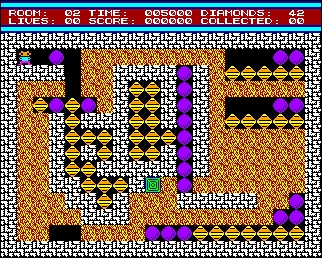- Details
- Geschrieben von Super User
- Hauptkategorie: Magazines
- Kategorie: CFOG's PIP
- Veröffentlicht: 30. November 1987
- Zugriffe: 18995
CFOG's PIP, September 1987, Volume 5 No. 11, Whole No. 59, page 1
Considering MS-DOS
by Gary Shaner
[I've talked about writing this article myself, but since Gary Shaner did and it was published in Siouxland Osborne Group's August '87 newsletter and in the Cincinnati Osborne Group's Seplember '87 newsletter, COGWheels <which we receive as an exchange>, and from which I copied it. -- bhc]
One of the reasons most of us have been so faithful to CP/M is that software that came with the machines. Now it is possible to replace the word processing, spreadsheet, and database software for less than $200, so it is practical to consider the switch to MS-DOS.
One of the adjustments a CP/M user has to make is the hardware requirements to accomplish useful work in MS-DOS. With CP/M and 2 double sided drives we have loads of storage and memory space to accomplish about anything we need.
When you start looking at a minimum capability MS-DOS machine with 256K memory and 2-360K floppies it does not take long to learn that virtually nothing can be accomplished with that limited capacity. The storage requirements of fundamental programs like Lotus 1-2-3 and dBASE III dictate that you really should consider 512K memory and a hard disk as a minimum machine.
dBase II was [is!] a fairly large program for CP/M, requiring about 90k bytes for the command, overlay, and help files. Dbx1 for MS-DOS requires 290k bytes for command, 250k for overlays, and 310k for help. The total program would not even fit on [360k byte capacity] floppies much less run effcctively. A minimum of 512k bytes of memory is required to use the program.
We have all accomplished a lot with SuperCalc where the command file takes about 30k bytes and leaves us with about 30k bytes for the spreadsheet. Lotus requires 190k bytes for the command file and needs about 374k bytes of memory to work effectively. My wife did the church books for several years with a SuperCalc worksheet that took 27k bytes to store. Now it is on Lotus and takes 110k bytes to store. Some expanded features like automatic column entry for her expenses have been added, but the program is basically the same.
[WordStar 4 for MS-DOS comes on 6 DSDD 360k byte capacity disks; for CP/M it comes on six SSDD 183k (Osborne format) or 191k byte (Kaypro II format) disks. Enough said. -- bhc]
All of this discussion serves to illustrate one point: when you start considering going to MS-DOS you have to completely adjust your reference point for the amount of storage and memory required to accomplish the same task that you currently perform in CP/M. In CP/M a hard disk is a luxury that would be nice to have; for MS-DOS it is a basic necessity.
- Zurück
- Weiter >>




